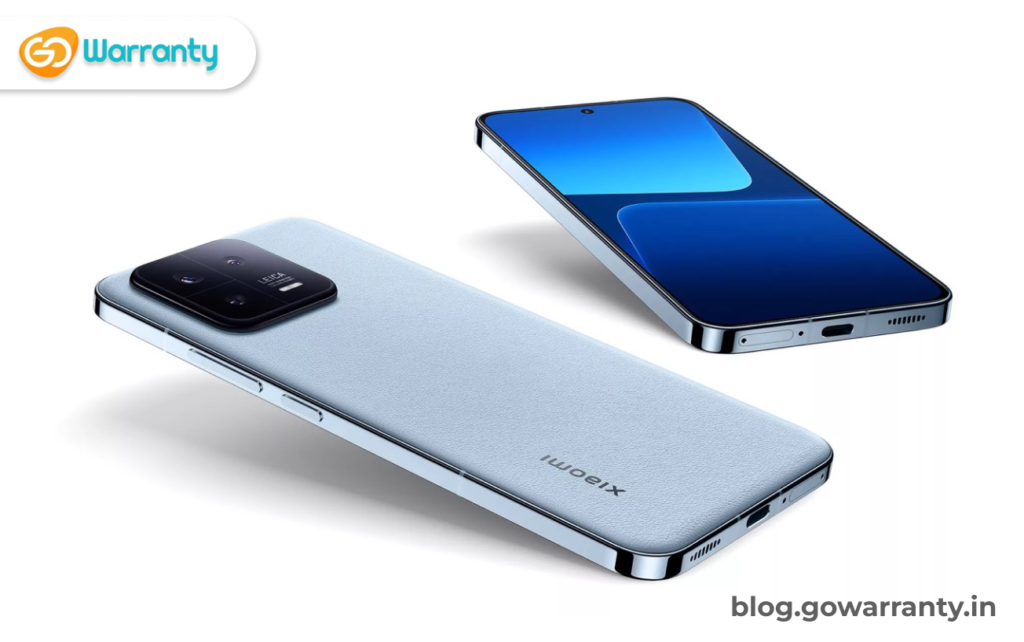The Xiaomi 13 Pro may be a successor to the previous 12 Pro, but it’s also possible to argue that it’s a continuation of the 12S Ultra, which was only available in China. That was the first to use the Type 1 (13.1 x 9.8mm) Sony IMX989 sensor, which was derived from the popular Sony RX100 but tailored to Xiaomi’s specifications.
It was also the first device showing what a collaboration with Leica could deliver after the company parted ways with Huawei. Combining a larger sensor with Leica’s software and visual taste resulted in an intriguing combination in the 12S Ultra, raising expectations about how the 13 Pro would compete against the industry’s best.
Specifications Table
| Chipset | Qualcomm Snapdragon 8 Gen 2 |
| No of cores | 8 (octa core) |
| RAM | 12 GB |
| RAM Type | LPDDR5X |
| Height-Width | 6.41in-2.94in |
| Weight | 229 grams |
| Resolution | 1440 x 3200 pixels |
| Display Type | AMOLED, 3D Dual Curved Glass, Curved Display, Dolby Vision, HDR 10+ |
| Colour Reproduction | 16M Colours |
| TouchScreen | Yes, Capacitive, Multi-Touch |
| Rear camera setup | Triple |
| Rear Camera | 50MP(Primary), 50MP(Secondary), 50MP(Tertiary) |
| Front camera | 32 MP Resolution |
| Flash | Dual-colour LED Rear flash |
| Video Resolution | 7680×4320 @ 24 fps3840x2160 @ 30 fps |
| Camera Features | Auto FlashAuto FocusFace detectionTouch to focus |
| Battery Type and capacity | Li-polymer, 4820 mAh |
| Fast Charging | Yes, 120W |
| Internal memory type | 256 GB, UFS 4.0 |
| Operating System | Android v13 |
| Custom UI | MIUI |
| SIM Configuration | Dual SIM |
| Wi-Fi | Yes |
| Bluetooth | Bluetooth v5.3 |
| GPS | Yes with A-GPS |
| Fingerprint sensor | Yes, On-screen |
| Face Unlock | Yes |
| Other Sensor | Light SensorProximity SensorAccelerometerCompassGyroscope |
Build and Design
This time, Xiaomi went with a slightly different design, blending the straight lines of the 12 Pro with the circular module of the 12S Ultra. It produces a noticeable but subtle bump, and the Leica branding is etched into it to emphasise the collaboration. The glossy finish on the ceramic back is appealing, but it is susceptible to fingerprints and smudges. Fortunately, Xiaomi includes a thin silicone case to provide some protection.

The 6.7-inch AMOLED (3200 x 1440) screen has the same 120Hz refresh rate, curved edges, and Gorilla Glass Victus protection as the 12S Ultra. It’s a little heavier than the average phone of this size, and the silicone case helps with stability when holding it to take photos. The curved edges, however, are less pronounced than they would have been years ago, and Xiaomi wisely reduced the curve in the back for a more ergonomic finish. Not to mention the IP68 protection, that is notable because the 12 Pro was never officially designated as such.
Camera
The rear camera array consists of three 50-megapixel sensors, with the wide camera’s Type 1 sensor serving as the anchor and featuring a Leica Vario-Summicron lens. It has a 23mm equivalent focal length, an f/1.9 aperture, optical image stabilisation, dual pixel autofocus, and laser autofocus. The 12S Ultra demonstrated what the IMX989 sensor was capable of, but Xiaomi and Leica indicate they’ve learned to do more with software, so that’s where we can expect the most change.
In Photo mode, the wide camera uses pixel binning to shoot at 12.5-megapixels while capturing light with the same large 1.6m sensor. The only way to shoot at full resolution is to use the 50MP mode, which captures less light but may be the best option when working on specific shots in post-production. The other two lenses shoot at the same resolution as the 12 Pro and have similar layouts.
Image Quality
The 13 Pro, like the 12S Ultra, supports experimentation because Leica’s colour toning and filtering complement the camera’s dynamic range. The black and white filters aren’t too generic, and the Authentic/Vibrant mix is a good compromise in most cases. If you find that Authentic muted tones too much, try Vibrant instead. Colours will pop without being oversaturated to the point where images look like they came from a social media filtering system.
Ultra-wide and Telephoto
These two lenses perform admirably in their supporting roles, with the telephoto lens in particular standing out. Integrating macro into the telephoto is a brilliant move because it virtually eliminates the possibility of the phone casting a shadow by crowding the phone over the subject itself.
Portrait Mode
The bokeh effects in Portrait mode are clearly a carryover from the Ultra, and I also felt the same way after trying them with the 13 Pro, which is to say that I frequently liked what they could produce. Part of this is due to the versatility they achieve, such as when shooting in low light to achieve blurred lights and strobes in the background. Portrait mode does not have the same bracketing or processing as, say, Night mode, so you must always consider how to light your subject.
Video Features
I concentrated on still images, but video is also worth looking at with this phone. The larger sensor contributes to a greater depth of field, which is useful when shooting at the same 1080p, 4K, or 8K resolutions. When capturing footage, you can choose between Leica’s Authentic or Vibrant modes to begin, similar to how the 12S Ultra did.
Competing with the best
The Xiaomi 13 Pro is a genuine piece. It demonstrates its worth as one of the top camera phones of 2023, clashing against the best on the market now and almost certainly what will come later in the year. The phone, and thus the brand, are still relatively unknown in North America, but seeing what it can do should raise a few eyebrows among those in the know. Collaboration with Leica adds credibility to what is quickly becoming one of the most versatile mobile shooters available.
Verdict and Alternatives
Yes, because the 12S Ultra was everything and more. Moving outside of China means that Google Play services are widely available, making the 13 Pro as accessible as any other Android phone. It costs INR 1,04,999, but you get what you pay for.
Another phone from a Chinese brand that keeps pushing the envelope on what and how a phone shoots photos is the Vivo X90 Pro. It employs the same Sony IMX989 image sensor and comparable telephoto and ultra-wide cameras, as well as a comprehensive set of software tools. There’s also the Zeiss collaboration, which is finally beginning to show its potential.

